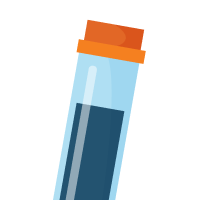Hyperhidrosis, often referred to as excessive sweating, is a medical condition that affects millions of individuals worldwide. It goes beyond normal perspiration and can significantly impact a person’s daily life and self-confidence. In this article, we will delve into what hyperhidrosis is, how it works, and the options available for managing this challenging condition, both before and after treatment.
Hyperhidrosis is a medical condition characterised by excessive sweating that goes beyond what is necessary to regulate body temperature. This condition can affect various parts of the body, such as the underarms, palms, soles of the feet, and face. Individuals with hyperhidrosis may experience profuse sweating even in cooler temperatures or when they are not physically exerting themselves.
There are two primary types of hyperhidrosis: primary focal hyperhidrosis and secondary generalised hyperhidrosis. Primary focal hyperhidrosis typically occurs in specific localised areas and often has a genetic component. In contrast, secondary generalised hyperhidrosis is associated with an underlying medical condition, such as an endocrine disorder, neurological issue, or an adverse reaction to medications.
How Does Hyperhidrosis Work?
Hyperhidrosis occurs due to overactive sweat glands that produce more sweat than necessary. While sweating is a natural bodily function designed to cool the body and regulate temperature, individuals with hyperhidrosis experience excessive sweating without any apparent trigger or physical exertion.
The condition is believed to be caused by overactive sympathetic nerves that control sweat glands. When these nerves become overstimulated, they send signals to the sweat glands to produce more sweat than needed, leading to excessive perspiration.
Before and after Hyperhidrosis treatment
Before seeking treatment for hyperhidrosis, it is essential for individuals to consult with a healthcare professional to obtain an accurate diagnosis and rule out any underlying medical conditions that may be contributing to the excessive sweating.
Once diagnosed, there are various treatment options available to manage hyperhidrosis. Before treatment, individuals often experience frustration, discomfort, and social embarrassment due to excessive sweating. Simple everyday activities may become challenging, affecting personal and professional life.
However, after treatment, the impact of hyperhidrosis can be significantly reduced. One of the most effective treatments for hyperhidrosis is PRP injections. PRP is injected into the affected areas, such as the underarms or palms, to block the nerve signals that trigger excessive sweating. The procedure is relatively quick and minimally invasive, offering relief from hyperhidrosis for several months.
After hyperhidrosis treatment with PRP, patients experience a noticeable reduction in excessive sweating, allowing them to feel more comfortable and confident in social settings and day-to-day activities. They no longer have to worry about embarrassing sweat stains on clothing or constantly feeling self-conscious due to their condition.
Why Choose Hair & Skin Science for Hyperhidrosis?
Hyperhidrosis is a medical condition characterised by excessive sweating that can significantly impact an individual’s quality of life. However, with the right diagnosis and treatment, such as PRP injections, the impact of hyperhidrosis can be significantly reduced. Patients can experience relief from excessive sweating and regain their confidence, leading to a more comfortable and fulfilling life. If you are experiencing excessive sweating, consult with our experts at Hair & Skin Science to explore the most suitable treatment options for your specific needs.





